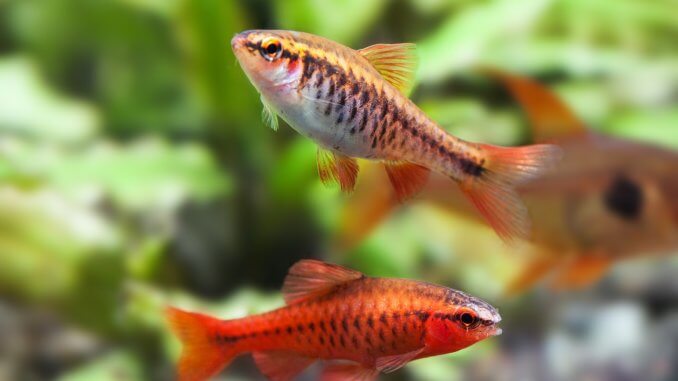
The cherry barb is a freshwater fish of the Cyprinidae family. The fish is small, bright red, and has a distinctive lateral stripe that spans the length of the body.
Cherry barbs are active and peaceful schooling fish. The species thrives in groups of six or more. The fish’s hardy nature makes it popular among beginner and experienced fishkeepers alike.
TABLE OF CONTENTS
Cherry Barb Facts & Overview
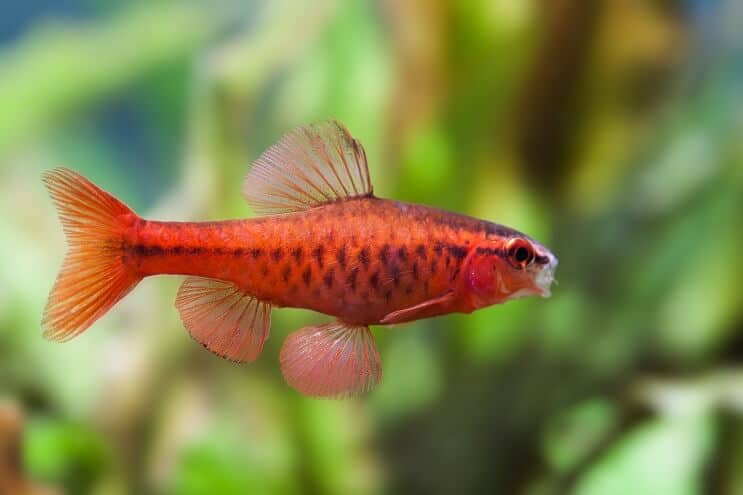
| Scientific name: | Puntius titteya |
| Common names | Cherry barb |
| Distribution: | Sri Lanka |
| Size: | Up to 2 inches |
| Life expectancy: | 4–6 years |
| Color: | Red with dark lateral stripe |
| Diet: | Omnivore |
| Temperament: | Peaceful |
| Minimum tank size: | 25 gallons |
| Temperature: | 74–79°F (23–26°C) |
| pH: | 6.0–7.0 |
| Hardness: | 2–18 dGH |
| Care level: | Easy |
| Breeding: | Egg scatterer |
Origin
Cherry barbs are native to Sri Lanka, where they inhabit the tropical Kelani and Nilwala river basins. These waters are shallow, warm, and densely vegetated. The fish are also found in rivers throughout Mexico and Colombia.
While cherry barbs are prolific in the pet trade, their population is declining in the wild because of excessive harvesting, habitat loss, and climate change. The IUCN Red List considers cherry barbs a vulnerable species.
Adult Size & Lifespan
Cherry barbs are small freshwater fish that grow up to 2 inches long, with males being smaller than females. The average lifespan of this species is 4 to 6 years. With proper tank conditions and care, cherry barbs live long, healthy lives.
Availability
Cherry barbs are popular and widely available in pet stores throughout the world. An individual costs $3 to $6, while a school of six costs between $15 and $30. Prices depend on the fish’s variety and age.
Cherry barbs are available at these online fish stores:
Appearance & Behavior
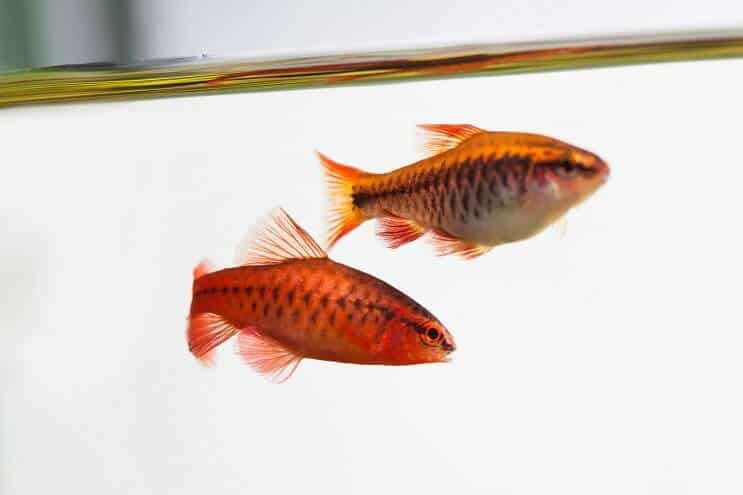
Cherry barbs get their name from their striking red color. The fish are small, slender, and peaceful.
Colors, Patterns, Fins, and Sex Differences
The cherry barb has a vibrant red, torpedo-shaped body, singular dorsal fin, and forked tail. The fish also has a distinctive horizontal stripe that extends from its mouth to its tail. Wild-caught cherry barbs tend to be more colorful than captive-bred cherry barbs.
Males and females are easy to distinguish. Female cherry barbs are typically larger and rounder than males, and are often paler in coloration with a darker lateral stripe. Males have vibrant red bodies, and these colors intensify during the breeding season.
Cherry barbs lose their red coloration when sick or stressed. Color morphs and selectively-bred varieties exist in the pet trade, including super red and albino varieties.
Typical Behavior
Cherry barbs are peaceful schooling fish that do well in community aquariums. These fish exhibit captivating schooling behavior and spend most of their time at the middle and bottom levels of the tank.
Cherry barbs are timid and skittish if they can’t find refuge, so provide plenty of hiding spots in the tank.
While generally peaceful, cherry barbs, particularly the males, can become aggressive and territorial during spawning. Ensure there are more males than females and that there’s plenty of space and hiding spots in the tank. Unlike many other barb species, cherry barbs rarely exhibit fin-nipping behavior.
Cherry Barb Care & Tank Requirements

Cherry barbs are easy to care for because they’re peaceful, can tolerate water fluctuations, and aren’t susceptible to any particular diseases.
This species thrives in a tank setup that mimics its natural habitat. Provide plenty of plants and keep the water slightly acidic or neutral. The fish are omnivores and should be fed a combination of pellets, live or frozen foods, and vegetables.
Habitat and Tank Requirements
In their wild habitat, cherry barbs thrive in shallow water that’s acidic, sheltered from light, and slow-flowing. Vegetation is abundant and the substrate is sandy and covered in silt and leaf litter. Cherry barbs feel safest with plenty of hiding spots.
Cherry barbs should be housed in a tank that’s 25 gallons or larger. Keep the water at a temperature between 74 and 79ºF, a pH level of 6 to 7, and a hardness around 2 to 18 dGH. The lighting should be dim. Create hiding spots where the fish can take refuge, such as caves, foliage, rocks, and driftwood.
A dark, sandy substrate brings out the cherry barb’s vibrant red coloration and helps the fish feel at home.
Tank Conditions
| Water type: | Freshwater, with partial water changes (25% to 30%) every other week. Densely vegetated tanks need weekly water changes |
| Tank size: | Minimum of 25 gallons for a small school of six cherry barbs. For every additional fish, increase tank size by 5 gallons |
| Water temperature: | 74–79°F (23–26°C) |
| Substrate: | Sandy, dark substrate |
| Tank setup: | Dense vegetation with plenty of hiding spots. Don’t overcrowd the aquarium |
| Acidity: | 6.0–7.0 pH |
| Water hardness: | 2–18 dGH |
| Filter: | Gentle but high-quality filtration is necessary to maintain water quality and prevent the buildup of ammonia and nitrate levels |
| Lighting: | Dim to moderate. Use leaf litter and floating plants to shelter fish from light |
| Plants: | Non-toxic aquatic plants that can tolerate similar water parameters, like java fern, hornwort, and anacharis |
While cherry barbs can tolerate water fluctuations, you should aim to keep tank water parameters stable to avoid stressing captive fish. Use a thermometer and pH meter to check parameters daily.
Disease
Cherry barbs are hardy and aren’t susceptible to any specific health issues. However, they’re affected by common freshwater diseases such as fin rot and ICH. Keeping water parameters stable, quarantining new fish, and feeding the fish a nutrient-rich diet are all measures that help prevent these diseases.
- Fin rot: A bacterial or fungal infection that affects the fins and tail, causing discoloration, a tattered, ragged appearance, and inflammation. Treatment involves antibiotics
- Ich: An infection caused by the parasite Ichthyophthirius multifiliis. Fish infected with ich develop salt-like white spots on their bodies and often exhibit flashing behavior, where they rub themselves against rocks and other harsh surfaces. Quarantine infected fish in a separate tank and slowly increase the water temperature in the infected home tank by a few degrees to speed up the parasite’s growth cycle
Tank Mates
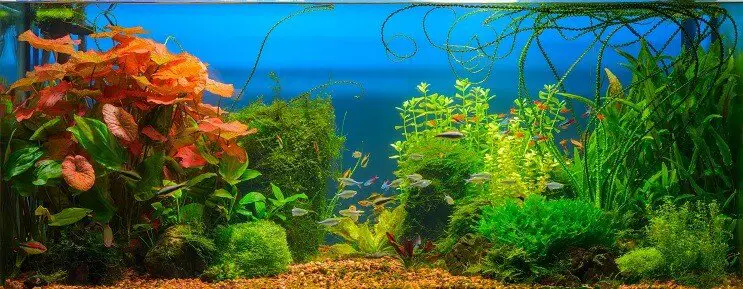
Cherry barbs are peaceful, shy schooling fish that do best with the company of their own kind. However, cherry barbs can happily be housed with other small, peaceful fish that won’t disturb them.
Tank mates should tolerate the same tank conditions as the cherry barbs. Never house cherry barbs with aggressive fish or large species that can easily fit cherry barbs into their mouths.
The best tank mates for cherry barbs include:
Diet and Feeding
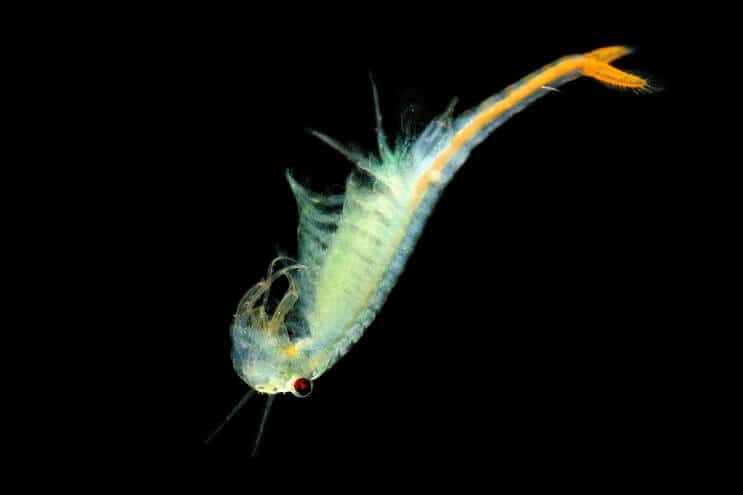
Cherry barbs are omnivores that feed on algae, plant matter, crustaceans, small insects, and detritus in the wild.
Simulate the fish’s varied diet in captivity with pellets, flakes, vegetables like zucchini and shelled peas, and occasional feedings of live or frozen foods. Daphnia, blood worms, and brine shrimp are all suitable, protein-rich meals for these small fish.
Feed cherry barbs two to three times daily, only giving them an amount they can eat within three minutes. These fish have voracious appetites and eat anything, so don’t overfeed them. Excessive leftovers can affect water quality.
Breeding
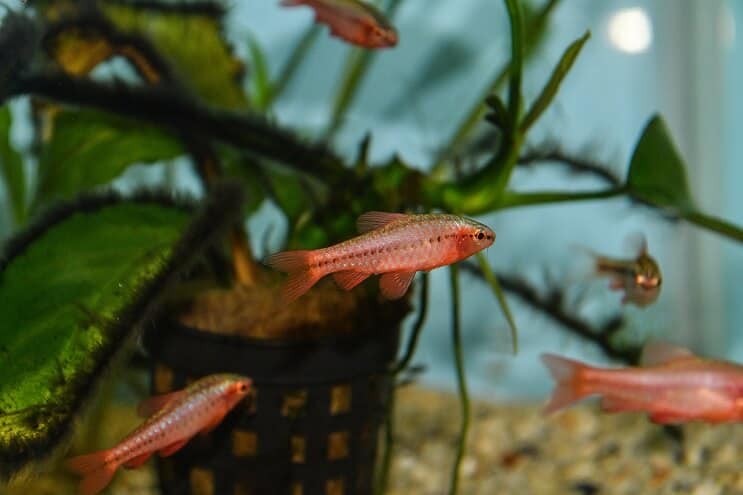
Cherry barbs are egg scatterers and lack parental instincts. The fish are easy to breed as long as ideal water parameters and tank conditions are established and the fry are properly cared for. Cherry barb females spawn between 200 and 300 eggs on average.
Follow the steps below to breed a pair of cherry barbs:
- Prepare a pair for breeding by feeding them live and frozen foods and gradually increasing the water temperature in their main tank by 2 to 3 degrees
- Move the pair into a separate, 15-gallon breeding tank. The water should have a hardness of 12 dGH, a temperature around 75 to 79°F, and a pH level between 6 and 6.5. Provide plenty of fine-leaved plants for the cherry barbs to scatter their eggs on. Keep the breeding tank away from harsh lighting and add a gentle sponge filter
- Supervise the fish pair while spawning occurs. When ready for spawning, the male cherry barb develops bright red coloration and swims near the female, deterring rivals. Gravid (egg-bearing) females are noticeably plump
- Remove the parent pair immediately once all the eggs have been deposited because cherry barbs eat their eggs. The eggs hatch within 48 hours and the fry become free-swimming the following day
- Feed fry newly-hatched brine shrimp or infusoria three times daily
- Transition them to an adult’s diet when they’re large enough to accept the food
Should You Get a Cherry Barb for Your Aquarium?
Colorful, peaceful, and captivating, cherry barbs are great additions to community aquariums. The fish are tolerant of water fluctuations and aren’t prone to any specific diseases, so they’re ideal for beginner fishkeepers.
You should get cherry barbs if your tank is at least 25 gallons, houses peaceful, small species, is densely vegetated, and has lots of hiding spots. You shouldn’t get cherry barbs if your tank contains aggressive large fish and lacks aquatic plants.
With the right tank setup and owner, cherry barbs provide hours of entertainment with their unique schooling behavior, and their vibrant red hue adds a pop of color to any aquarium.

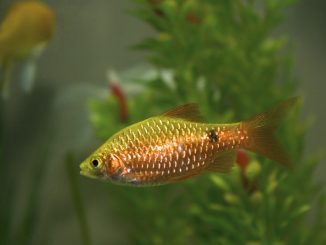
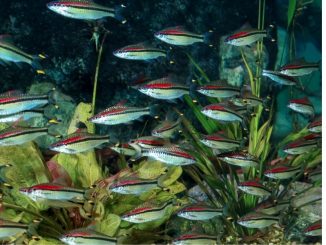
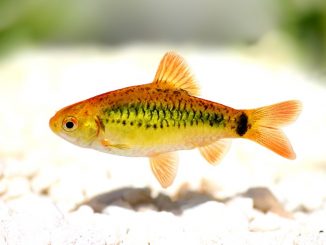
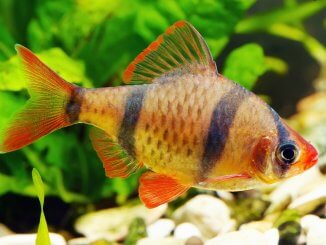

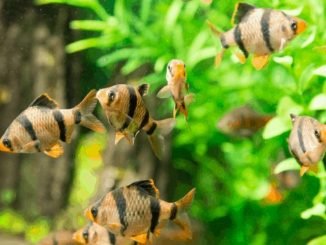
I’m currently into rasabora tetras the largest being brilliant rasabora& smallest being chilly rasbora;w/dwarf chain loaches,hilstream loaces&spiny loaches as the cleanup crew!ps:lately though my aquarium has been running icy cold…however I’m hesitant to run a heater because of the fact that all the information suggests that hilstream loaches(sewelia) tend to not do well in heated Aquarium settings such as most tropical fish tend to like!
James, Just a thought, but couldn’t you put a heater in but set it very low?
Hi, under the brine shrimp image it says cherry barb loves to eat shrimp. But the content says it’s safe to keep red cherry shrimp with cherry barb. Is it safe?
I’ve got 10 cherry barbs living with 6 green tiger barbs, 4 red bellied tiger barbs and 4 yoyo loaches in a 240L. They get on absolutely fine, the male cherrys actually chase the tiger barbs away on occasion, and I’ve seen no aggression or even interest from the Tigers towards the cherry barbs. Even when the tigers are being rowdy amongst themselves the cherry barbs aren’t affected, they rarely even move out of the area and just carry on as normal. I think having a decent sized group of tiger barbs helps though, as all their interest is on eachother.
I have 4 make cherry barb. When I bought them a week ago I did not realise they were all male as I have never kept fish before. One is very dominant and aggressive and it seems this would be less likely if there were females. The tank is only 25 lts which means I should only have 5 fish. In addition, there should be twice as many females. Any advice would be much appreciated?
I have a 6 yr old gouramis kissing fish 4 inch long, can i add cherry barbs for tank mates
I keep a group of about 15 neon tetras and a school of 9 or so cherry barbs in a planted 60 gallon aquarium. The 2 schools zoom around and make a relaxing display.